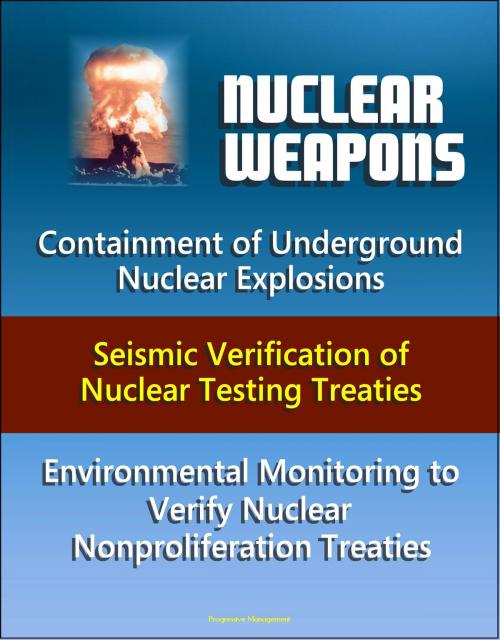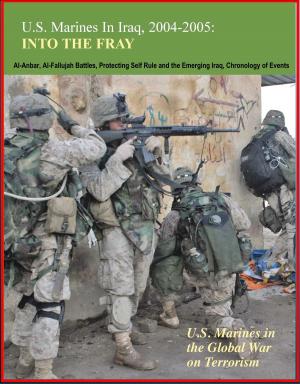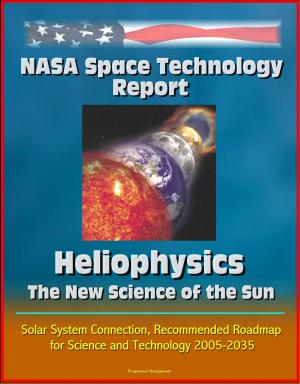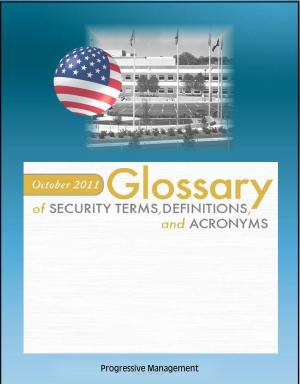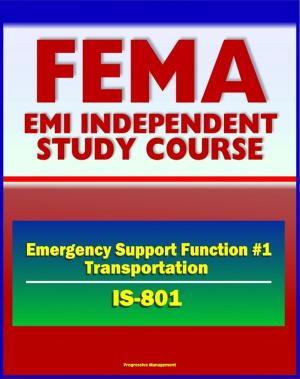Nuclear Weapons: Containment of Underground Nuclear Explosions, Seismic Verification of Nuclear Testing Treaties, Environmental Monitoring to Verify Nuclear Nonproliferation Treaties
Nonfiction, History, Military, Nuclear Warfare| Author: | Progressive Management | ISBN: | 9781311707239 |
| Publisher: | Progressive Management | Publication: | July 7, 2014 |
| Imprint: | Smashwords Edition | Language: | English |
| Author: | Progressive Management |
| ISBN: | 9781311707239 |
| Publisher: | Progressive Management |
| Publication: | July 7, 2014 |
| Imprint: | Smashwords Edition |
| Language: | English |
Three authoritative reports provide unique information about nuclear weapons testing and the verification of nuclear nonproliferation treaties: (1) The Containment of Underground Nuclear Explosions, (2) Seismic Verification of Nuclear Testing Treaties, (3) Environmental Monitoring for Nuclear Safeguards.
The Containment of Underground Nuclear Explosions - At a time of continued underground nuclear bomb tests, an assessment of the safety of the process led to this report. This special report reviews the safety of the nuclear testing program and assesses the technical procedures used to test nuclear weapons and ensure that radioactive material produced by test explosions remains contained underground. An overall evaluation considers the acceptability of the remaining risk and discusses reasons for the lack of public confidence.
Seismic Verification of Nuclear Testing Treaties - Like an earthquake, the force of an underground nuclear explosion creates seismic waves that travel through the Earth. A satisfactory seismic network to monitor such tests must be able to both detect and identify seismic signals in the presence of "noise," for example, from natural earthquakes. In the case of monitoring a treaty that limits testing below a certain size explosion, the seismic network must also be able to estimate the size with acceptable accuracy. All of this must be done with an assured capability to defeat adequately any credible attempt to evade or spoof the monitoring network. This report addresses the issues of detection, identification, yield estimation, and evasion to arrive at answers to the two critical questions: Down to what size explosion can underground testing be seismically monitored with high confidence? How accurately can the yields of underground explosions be measured?
Environmental Monitoring for Nuclear Safeguards - To assure that states are not violating their Non-Proliferation Treaty commitments, the International Atomic Energy Agency (IAEA) must also verify that states do not possess covert nuclear facilities—a mission that prior to the 1991 Gulf War, it had neither the political backing nor the resources to conduct. In the report, OTA concluded that providing the IAEA with the resources, the information, and the political support it needs to look for such sites may turn out to be the most important aspect of a reinvigorated safeguards regime. The IAEA recognizes the importance of this new mission and is in the process of assuming it. One of the tools it is exploring to provide some indication of the presence of secret, or undeclared, nuclear activities and facilities is environmental monitoring. Modern sampling and analysis technologies provide powerful tools to detect the presence of characteristic substances that are likely to be emitted by such illicit activities. This background paper examines the prospects for such technologies to improve nuclear safeguards. It concludes that environmental monitoring can greatly increase the ability to detect undeclared activity at declared, or known, sites, and it can significantly increase the chances of detecting and locating undeclared sites.
Three authoritative reports provide unique information about nuclear weapons testing and the verification of nuclear nonproliferation treaties: (1) The Containment of Underground Nuclear Explosions, (2) Seismic Verification of Nuclear Testing Treaties, (3) Environmental Monitoring for Nuclear Safeguards.
The Containment of Underground Nuclear Explosions - At a time of continued underground nuclear bomb tests, an assessment of the safety of the process led to this report. This special report reviews the safety of the nuclear testing program and assesses the technical procedures used to test nuclear weapons and ensure that radioactive material produced by test explosions remains contained underground. An overall evaluation considers the acceptability of the remaining risk and discusses reasons for the lack of public confidence.
Seismic Verification of Nuclear Testing Treaties - Like an earthquake, the force of an underground nuclear explosion creates seismic waves that travel through the Earth. A satisfactory seismic network to monitor such tests must be able to both detect and identify seismic signals in the presence of "noise," for example, from natural earthquakes. In the case of monitoring a treaty that limits testing below a certain size explosion, the seismic network must also be able to estimate the size with acceptable accuracy. All of this must be done with an assured capability to defeat adequately any credible attempt to evade or spoof the monitoring network. This report addresses the issues of detection, identification, yield estimation, and evasion to arrive at answers to the two critical questions: Down to what size explosion can underground testing be seismically monitored with high confidence? How accurately can the yields of underground explosions be measured?
Environmental Monitoring for Nuclear Safeguards - To assure that states are not violating their Non-Proliferation Treaty commitments, the International Atomic Energy Agency (IAEA) must also verify that states do not possess covert nuclear facilities—a mission that prior to the 1991 Gulf War, it had neither the political backing nor the resources to conduct. In the report, OTA concluded that providing the IAEA with the resources, the information, and the political support it needs to look for such sites may turn out to be the most important aspect of a reinvigorated safeguards regime. The IAEA recognizes the importance of this new mission and is in the process of assuming it. One of the tools it is exploring to provide some indication of the presence of secret, or undeclared, nuclear activities and facilities is environmental monitoring. Modern sampling and analysis technologies provide powerful tools to detect the presence of characteristic substances that are likely to be emitted by such illicit activities. This background paper examines the prospects for such technologies to improve nuclear safeguards. It concludes that environmental monitoring can greatly increase the ability to detect undeclared activity at declared, or known, sites, and it can significantly increase the chances of detecting and locating undeclared sites.
